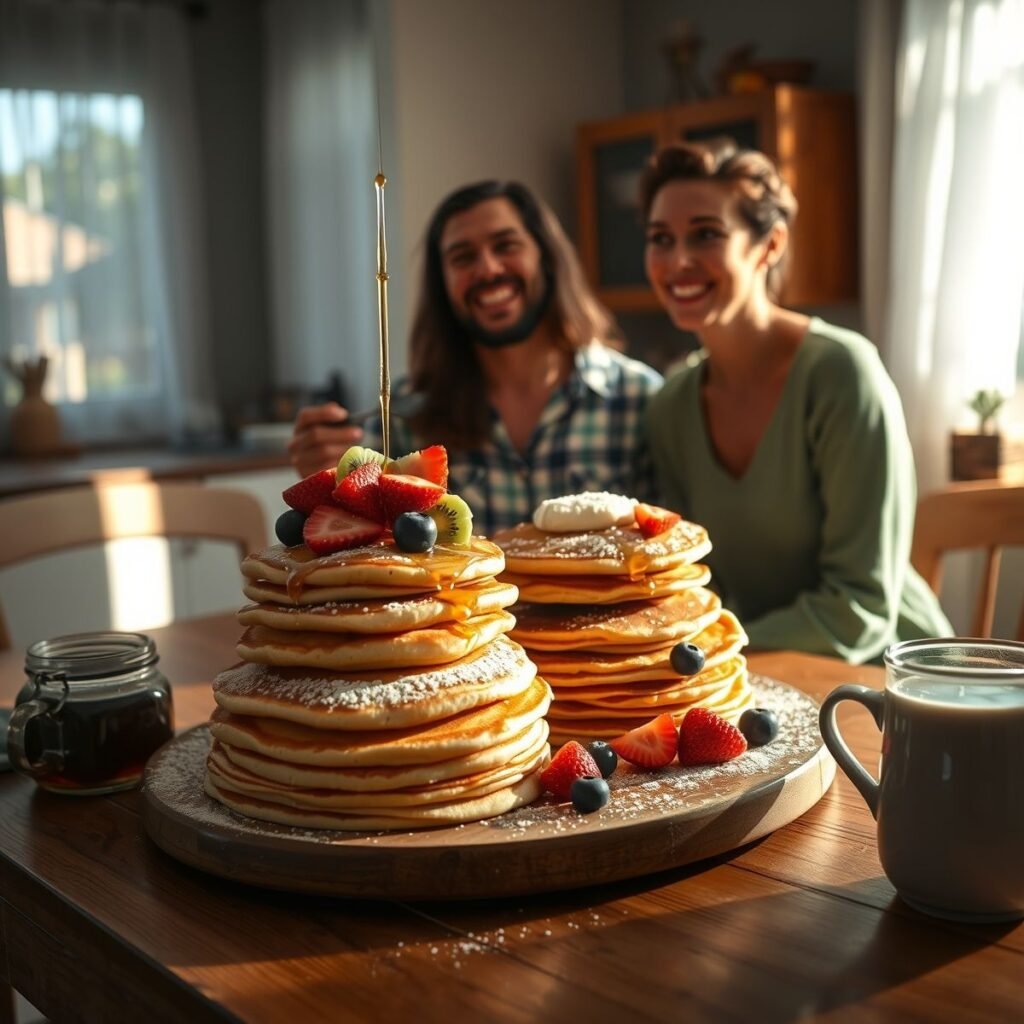Índice do Conteúdo
Understanding Perfect Pancakes
Perfect pancakes are the epitome of a delightful breakfast experience. They are characterized by their light and fluffy texture, which can elevate any weekend morning. The science behind achieving these fluffy pancakes lies in the balance of ingredients and the cooking technique employed. Mastering this breakfast staple can transform your leisurely weekends into a culinary adventure.
The Importance of Ingredients
The ingredients you choose play a crucial role in making perfect pancakes. The combination of flour, baking powder, eggs, milk, and fat contributes to the overall texture and flavor. Using fresh ingredients, particularly baking powder, ensures that your pancakes rise properly, creating that desired fluffiness. Opting for whole ingredients, such as buttermilk instead of regular milk, can also add a unique taste and richness to your pancakes.
Measuring Ingredients Accurately
Accurate measurement is essential when creating perfect pancakes. Using measuring cups and spoons allows for consistency in your batter. Too much flour can lead to dense pancakes, while not enough liquid can result in a dry texture. For the best results, consider weighing your ingredients for precision. This attention to detail can significantly impact the outcome of your dish.
The Role of Mixing Techniques
How you mix your pancake batter can influence its fluffiness. Overmixing can develop gluten, leading to tough pancakes. Instead, combine your dry and wet ingredients gently, mixing until just combined. There may be some lumps in the batter, which is perfectly fine. This technique ensures that your pancakes remain light and airy, achieving that perfect fluffy texture.
Resting the Batter
Allowing your pancake batter to rest is a game-changer in achieving fluffiness. Letting the batter sit for about 10 to 15 minutes allows the flour to hydrate fully and the baking powder to activate, resulting in a lighter pancake. This step is often overlooked, but it can make a significant difference in the texture of your pancakes.
Cooking Temperature Matters
The cooking temperature is another critical factor in making perfect pancakes. A medium heat setting on your stovetop is ideal; too high can burn the outside while leaving the inside uncooked. It’s essential to preheat your pan or griddle properly. A drop of water should sizzle and evaporate quickly when the pan is ready. This ensures even cooking and prevents sticking.
Flipping Technique
Flipping your pancakes at the right time is vital for achieving that perfect golden-brown exterior. Wait until bubbles form on the surface of the batter and the edges appear set before flipping. Use a spatula to gently lift the pancake and turn it over. This technique helps maintain the fluffy texture while ensuring even cooking on both sides.
Serving Suggestions
Once your pancakes are cooked to perfection, the next step is serving them. Enhance your breakfast with fresh fruits, maple syrup, whipped cream, or even a dusting of powdered sugar. Adding toppings can elevate your pancake experience, making it not only delicious but visually appealing as well. Consider experimenting with flavors by incorporating chocolate chips or blueberries into the batter.
Storing Leftover Pancakes
If you happen to have leftover pancakes, storing them properly is essential for maintaining their texture. Allow the pancakes to cool completely before stacking them with parchment paper in between. Store them in an airtight container in the fridge for up to three days or freeze them for longer storage. Reheat them in a toaster or microwave for a quick breakfast any day of the week.
Conclusion
Perfect pancakes are not just a breakfast item; they’re an experience. By understanding the nuances of ingredient selection, mixing techniques, and cooking methods, you can create fluffy pancakes every time. Whether enjoyed plain or dressed up with toppings, these pancakes are sure to delight everyone at the breakfast table.



